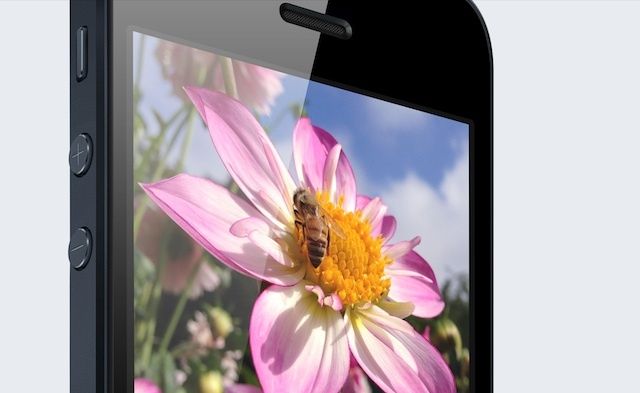Samsung’s got a flagship smartphone coming down their pipeline. It’ll probably be called the Galaxy S IV. It will probably be launched in April. It will have all kinds of great and ridiculous features that I’m sure Android fans will love. But it will also have a screen that knocks the socks off Apple’s Retina display.
There have been rumors for a while now that Samsung wants to add a display to the Galaxy S IV that’s much more pixel dense than the iPhone’s Retina display. According to the latest reports, the Galaxy S IV’s display will have a pixel density of 440ppi, which sounds like overkill, but it’s actually something Apple needs to consider adding, too.
When Steve Jobs announced the iPhone 4’s Retina display he said there’s a magic pixel density threshold that makes pixels indistinguishable for the human retina. That number was around 300ppi. Steve was kind of right. There have been mathematical formulas and scientists supporting the Retina display’s qualities. But Retina isn’t enough.
A lot of people will claim that the battle to make screens with higher pixel densities doesn’t matter because we’ve already passed the threshold of it being useful. They’re wrong. This isn’t like the battle for megapixel count that the camera industry waged for a few years. Boosting pixel density turns a digital object on a screen into a life-like objects. It’s the kind of tech magic that Apple has prided itself on for years.
Cult of Mac’s John Brownlee wrote an excellent piece on Retina displays last year talking about why Apple needs to keep pushing for higher pixel density.
Back in 2010, Japan’s NHK Science & Technology Research Laboratories discovered that across the board, the smaller the pixels, the more real an on-screen object seemed to the person viewing it, even if they didn’t have perfect vision. In fact, this effect is so profound on individuals that it eventually reaches a point where you have pixels small enough that on screen objects are completely indistinguishable from real objects.
For a display to truly, indisputably match the resolution of the human eye and be considered true Retina, it needs to have pixels that are no larger than 0.3 arc minutes in size from an average viewing distance.
For the iPhone’s Retina display to reach that 0.3 arc minutes figure, it would actually need a pixel density that’s over 700ppi. It’s currently impossible to manufacture a 4-inch display with a 700ppi screen, but there are a few tricks to make a screen look better at lower resolutions that Apple’s not currently trying.
While Apple’s been pushing for better Retina displays on the iPad, MacBook, and iMac, it needs to make improvements to the iPhone’s Retina display in the next two years. It’s unlikely that the iPhone 5S will have a higher pixel density than the iPhone 5, but Apple and its fans shouldn’t scoff at Samsung’s efforts to make richer displays.
Source: TechCrunch


